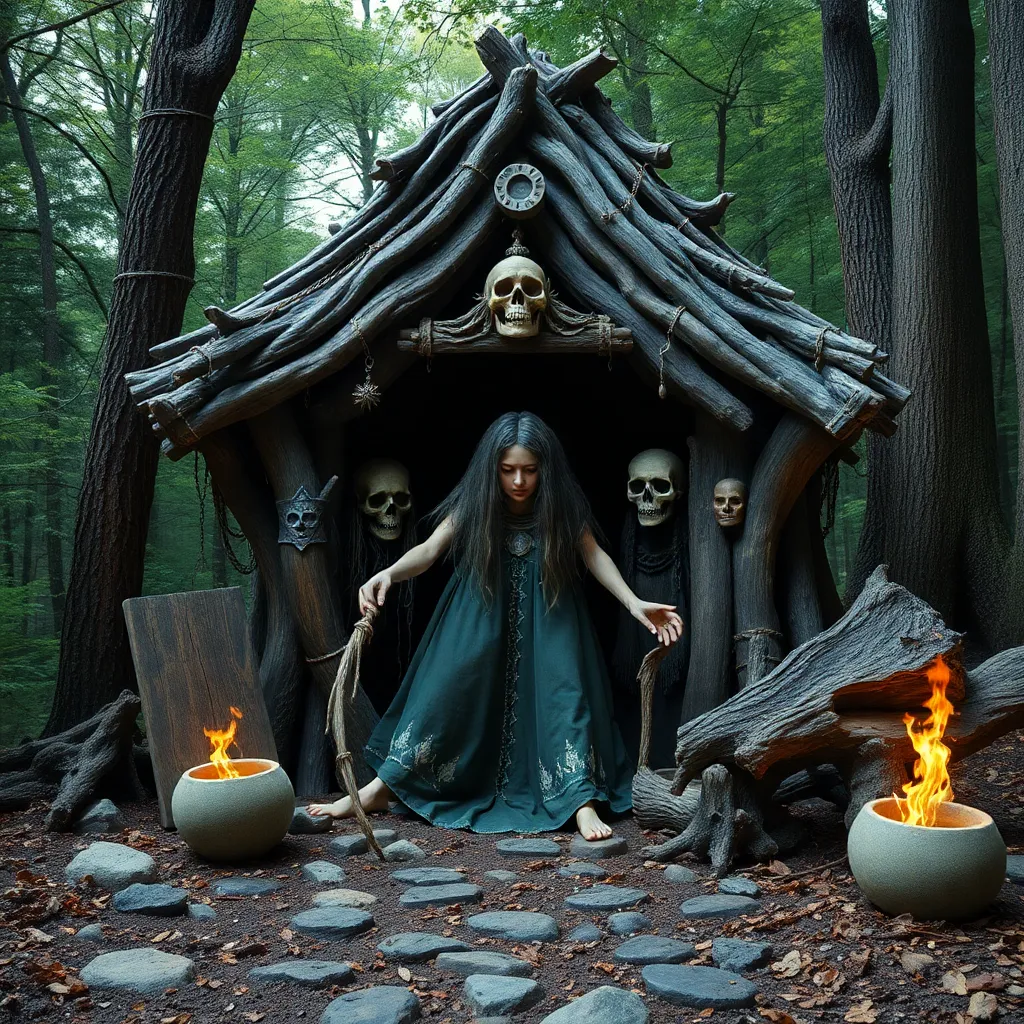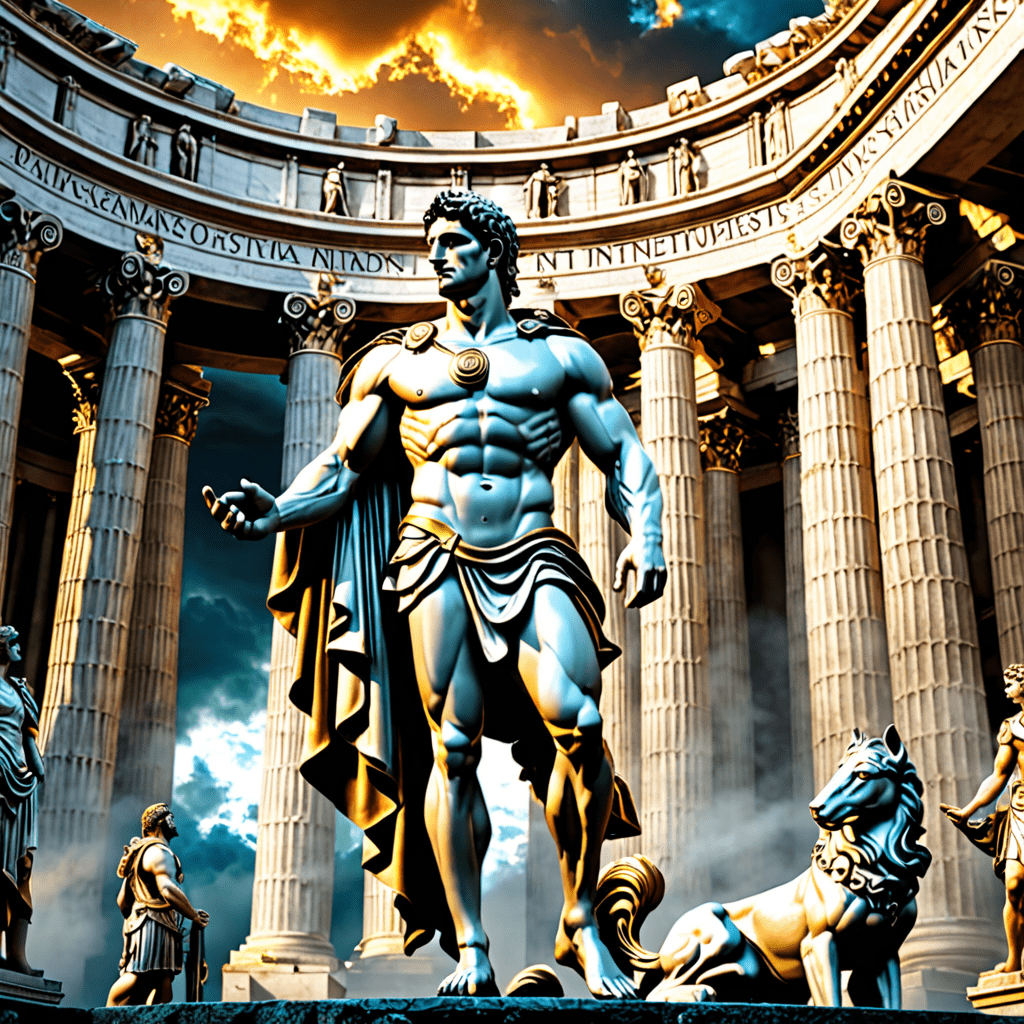Baba Yaga and the Cycle of Life and Death: Exploring Her Role in the Afterlife
I. Introduction
Baba Yaga is one of the most iconic figures in Slavic folklore, often depicted as a mysterious old woman with a complex role in various narratives. She embodies the dualities of life and death, serving as both a source of fear and a source of wisdom. The importance of the cycle of life and death is a recurring theme in many mythologies, and Baba Yaga’s stories offer rich insights into these concepts.
This article aims to explore Baba Yaga’s role in the afterlife, examining her characteristics, symbolism, and the cultural significance of her stories in understanding the transitions between life and death.
II. The Mythical Figure of Baba Yaga
A. Description and characteristics of Baba Yaga
Baba Yaga is typically portrayed as an old, haggard woman with a long nose and sharp teeth, flying around in a mortar while wielding a pestle. Her dwelling is a hut that stands on chicken legs, allowing it to move and evade those who seek her. This unique physicality adds to her enigmatic character.
B. Her portrayal in various tales and legends
In Slavic folklore, Baba Yaga appears in numerous tales, often interacting with heroes and heroines who seek her help or guidance. She can be both a villain and a mentor, depending on the narrative context. Some stories depict her as a cannibalistic witch, while others show her offering wisdom and assistance.
C. The duality of her nature: both a helper and a hindrance
This duality is central to Baba Yaga’s character. She embodies the unpredictable nature of life and death, helping those who are worthy while challenging those who are not. This aspect of her personality reflects the complexities of human existence and the moral lessons inherent in the cycle of life.
III. The Symbolism of Baba Yaga in Life and Death
A. Representations of life stages in her narratives
Baba Yaga’s tales often symbolize different stages of life, from innocence and youth to wisdom and old age. Her interactions with characters can represent the trials one must face as they transition through these stages.
B. The concept of transformation and rebirth
Transformation is a recurring theme in Baba Yaga’s stories. Characters who encounter her may undergo significant changes, suggesting that facing one’s fears and challenges can lead to personal growth and rebirth.
C. Baba Yaga as a guardian of thresholds between life and death
As a figure who exists at the boundary of the living and the dead, Baba Yaga serves as a guardian of thresholds. Her hut, which can move and hide, symbolizes the elusive nature of death and the mysteries that lie beyond it.
IV. Baba Yaga’s Connections to the Afterlife
A. Her role as a guide for souls
In some interpretations, Baba Yaga acts as a guide for souls navigating the afterlife. Her knowledge of the forest and the secrets it holds positions her as a figure who understands the journey between life and death.
B. Interpretations of her dwelling: the forest and the hut on chicken legs
The forest, where Baba Yaga resides, is often seen as a liminal space, a place where the boundaries between worlds blur. Her hut, which can relocate and is sometimes described as being difficult to find, reflects the unpredictable nature of death and the afterlife.
C. Rituals and beliefs surrounding her in Slavic cultures
In various Slavic cultures, rituals and beliefs surrounding Baba Yaga highlight her significance in the afterlife. She is sometimes invoked in ceremonies intended to protect souls or guide them safely to their next destination.
V. Comparative Analysis with Other Mythological Figures
A. Similarities with other death deities across cultures
Baba Yaga shares similarities with other mythological figures associated with death, such as:
- Hades from Greek mythology, who rules the underworld.
- Anubis from Egyptian mythology, known for guiding souls to the afterlife.
- Persephone, who embodies the cycle of life, death, and rebirth.
B. Contrasts with figures like Hades, Anubis, and Persephone
Unlike these more defined deities, Baba Yaga’s role is less about judgment and more about the chaotic nature of life and death. She does not govern the dead; instead, she interacts with them in a more personal and unpredictable manner.
C. The unique aspects of Baba Yaga’s role in the afterlife
Baba Yaga’s unique position as both a nurturer and a threat sets her apart from other mythological figures. Her stories reflect the complexities of life, survival, and the transition into the unknown.
VI. Modern Interpretations and Representations
A. Baba Yaga in contemporary literature and media
Today, Baba Yaga appears in various forms of modern literature and media, often reinterpreted as a symbol of empowerment or wisdom. Authors and filmmakers use her character to explore themes of femininity, power, and the complexities of morality.
B. The evolution of her character in popular culture
In contemporary portrayals, Baba Yaga is increasingly seen as a figure of strength rather than merely a villain. This evolution reflects changing societal attitudes towards female power and independence.
C. Reinterpretation of her role in the context of modern spirituality
Modern spirituality often reclaims Baba Yaga as a wise woman, a healer, and a guardian of the old ways. This reinterpretation aligns her with contemporary movements that honor nature, femininity, and ancestral wisdom.
VII. The Cultural Significance of Baba Yaga Today
A. How her myths resonate in contemporary society
Baba Yaga’s myths continue to resonate today, reflecting ongoing struggles with identity, power, and the human condition. Her stories serve as a reminder of the balance between fear and respect for the unknown.
B. The importance of folklore in understanding life and death
Folklore, such as that surrounding Baba Yaga, plays a crucial role in helping societies comprehend the complexities of life and death. These narratives provide frameworks for understanding mortality and the transitions that accompany it.
C. Baba Yaga as a symbol of female power and wisdom
As a figure who embodies both chaos and wisdom, Baba Yaga represents the multifaceted nature of femininity. She challenges traditional gender roles and inspires a reevaluation of women’s power in both life and death.
VIII. Conclusion
Baba Yaga’s multifaceted role in the cycles of life and death highlights her significance in Slavic folklore and beyond. Her character serves as a bridge between the known and the unknown, life and death, fear and wisdom. The enduring legacy of her myths provides valuable insights into our understanding of the afterlife and the human experience.
In reflecting on Baba Yaga, we are reminded of the importance of folklore in shaping our perceptions of life, death, and the mysteries that lie beyond. Embracing these stories allows us to navigate the complexities of existence with greater understanding and respect.



